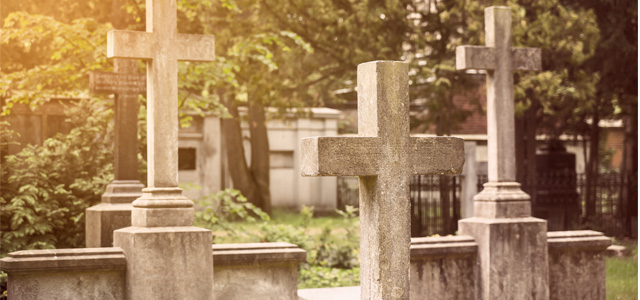The Work of the Dead: A Cultural History of Mortal Remains, Thomas Laqueur, Princeton University Press.
Saint Francis told his followers to throw his dead body on the rubbish tip when he died. (They didn’t oblige.) This is one story that isn’t related in Thomas Laqueur’s massive and not necessarily morbid book, but it parallels the Greek philosopher Diogenes’ question (which Laqueur’s book is largely a response to), why don’t we just throw dead bodies to the dogs (seeing as we generally recognise that when our loved ones are dead they are no longer ‘here’)?
Dead bodies aren’t, contrary to popular opinion, generally unhealthy, but, Laqueur suggests, an un-cared-for dead body is mentally unhealthy for the living. The living have an understandable connection to the recently deceased, and we also generally share an unease about what might happen to our own bodies after we die, even if we can also admit we are likely to be unconcerned at the time.
Care for the dead is culturally ubiquitous (and can be traced back to the earliest of human archaeological evidence) and is not dependent on religious views of the afterlife. We can see this in the atheist Soviet Union’s reverence for and preservation of Lenin’s body (although there was also the issue there that just maybe modern science would be able to resuscitate Lenin).
In his recent book Underland Robert Macfarlane writes that sometimes we are more tender to the dead than the living. (Maybe this is because, like babies, the dead completely lack autonomy.) In previous centuries riots and revolutions were caused by relatives of those dead disturbed by military or other authorities. Sometimes this reverence took on weird (to modern readers) forms, such as radical writer William Cobbett ‘owning’ the bones of Tom Paine, whose skull Cobbett engraved with his name (a not uncommon practice, Laqueur tells us).
We have a connection to the dead because there is something of the person still there, even if, as Francis recognised, the soul is gone and the body is dirt. Saint Augustine agreed, but suggested that reverence for the dead helps the living and shows a religious disposition. The body is still remnant, like a dead person’s clothing and possessions, we connect memories to physical objects. People are combinations of the physical and mental.
Despite traceable universals, Laqueur also tracks shifts in the way we care for the dead. Churchyards were a change from the ancient practice of keeping the dead away from sacred spaces. (Early Christianity’s reverence for the dead perhaps fits with their care of the other marginalised entities in society, orphans and widows.) Christian churches became sacred partly because of the proximity of the dead. Whereas in the classical era the dead were often thought of as exiled, in Christianity the porousness of the division between the physical and supernatural also included connections to the dead. The treatment of relics evolved from the desire to be buried near the saintly. Augustine, despite saying that the fate of the body didn’t determine the fate of the soul, thought that the saints’ dead bodies had power and being buried near them certainly couldn’t hurt.
The English churchyard (where Laqueur spends a lot of time wandering, at least metaphorically) was a natural extension, a community of believers, both living and dead, sharing sacred space. But who was allowed in became an issue. At one end of the scale, proximity to the altar showed the status of the gentry, and being buried in the church rather than outside it became a matter of pride. In contrast, there was debate about how far from the church the poor, suicides, the unbaptised and irreligious should be, where they should be relegated, and whether they should be allowed into the churchyard at all.
This changed fundamentally in the early nineteenth century with the creation of city cemeteries, beyond the direct control of clergy. Laqueur also notes the shifts from church to government and from priest to doctor in care of the dead. With the latter came a shift from death being a community affair to being hidden away. Death (as distinct from a funeral) shifted from public to private, and from being thought of as natural to something akin to disease.
These topics are but the tip of the gravestone in Laqueur’s monumental book. He also covers the Mormon collection and storage of millions of names of the dead in a vault under Utah, the deathbed confessions of atheists and their use in propaganda, hysteria over dead bodies, especially of the poor, piling up in the eighteenth century graveyards of Paris and London, which were as crowded above as below, and the proliferation of Great War monuments to the dead. Through all this, his careful attendance to the way practices change indicates that the dead don’t always rest peacefully.
Nick Mattiske blogs on books at coburgreviewofbooks.wordpress.com






